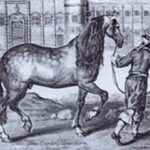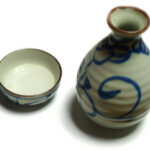Once, the Spanish Barb was one of the most sought after riding horses in the world. But now, the true Spanish Barb is a rare breed, indeed, with less than 2000 registered. The name “Spanish Barb” wasn’t coined until the twentieth century in America, but the name will be used throughout this article for the sake of convenience. Until the name Spanish Barb was used, the horses were often called Spanish Jennets, Berbers, African Barbs or just Barbs.
There are some arguments that since many modern breeds of horses such as the Paso Fino, Peruvian Paso and the Kiger mustang contain Spanish Barb blood, that the breed could be recreated should it actually die out. Since there are only about 200 horses registered per year with the Spanish Barb Breeders Association, adding outside blood may be an option for the future but is currently not practiced.
Brief History
Around 711 CE, North African Berbers invaded Spain and brought their tough, agile horses with them. The Berbers stayed in Spain nearly 800 years and left a lasting impression on all of the horses in the country. By breeding the tough Oriental horses with the heavy local warhorses, the resulting horse was ideal not only for cavalry, but for all around riding and for working cattle.
According to Storey’s Illustrated Guide to 96 Horse Breeds of North America (Storey Publishing; 2005), Spanish Barbs were the most common breed in the American West until 1803 when the fledging country of American bought the territory from Spain. Also around this time, Spanish Barb-type horses were popular with Native American tribes.
When the American government began to systematically wipe out the Native tribes, this racism also extended to the horses they rode or caught in the wild for remounts. The Spanish Barb-type horse or any Barb type was also systematically exterminated. However, some wily ranchers recognized the small horses’ worth and managed to save them for their own uses.
In 1957, one person, Susan Field-Paulton tried to save the breed. By 1965, she had a foundation stock of a whopping two mares and two stallions, one of which was a Medicine Hat pinto named Sun. The other stallion, Scarface, was bred by the Romero family of Mexico, who had been quietly breeding Spanish Barbs since the 1800s. The names of the foundation mares were Coche Two and A-Ka-wi. All known Spanish Barbs living today trace back to these four horses.
General Appearance
The Spanish Barb has a straight or slightly convex profile, with a broad, flat forehead narrowing to a small muzzle. Their ears are often small in comparison to the rest of the head, but mares may have ears up to one inch longer than stallions. The eyes are usually described as “expressive” but when you look into them, you can practically see the wheels turning in their heads as they check you out.
The bodies are lean but muscular like a marathon runner’s body. They have deep chests, short backs and sturdy legs. The hooves need to be strong. The croup and hindquarters are well rounded in order to give power and ability to turn on a dime. Adults rarely grow taller than 14.3 hands high, with 14 hands being the average height. Horses slightly taller than 14.3 can be registered with the Spanish Barb Horse Association if they meet all of the other physical requirements.
There is no limitation to the colors and markings that Spanish Barbs have, although dun-factor colors seem to be the most common. Blacks, bays, roans, chestnuts, greys and pintos also appear. Blue eyes or horses with two eye colors (as appears in pintos) are allowed. Many will grow a thick mane, forelock and tail.
Additional References
- International Encyclopedia of Horse Breeds Bonnie Hendricks. University of Oklahoma Press, 1995.
- Storey’s Illustrated Guide to 96 Horse Breeds of North America. Judith Dutson. Storey Publishing, 2005.
- The Official Horse Breeds Standard Book. Fran Lynghaug. Voyageur; 2009.





